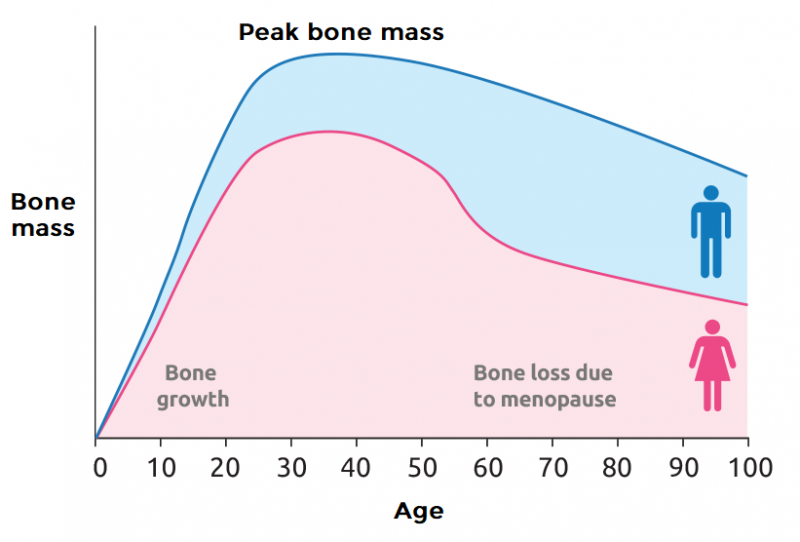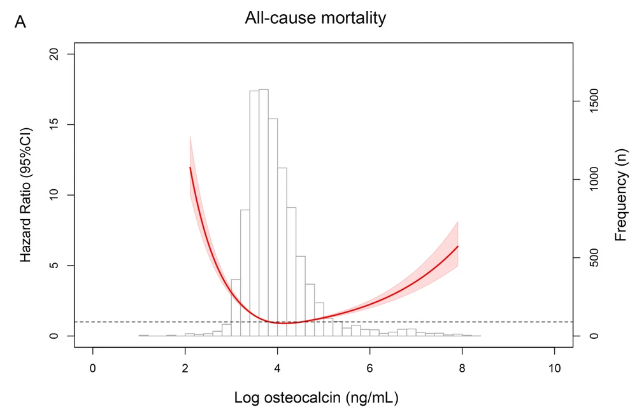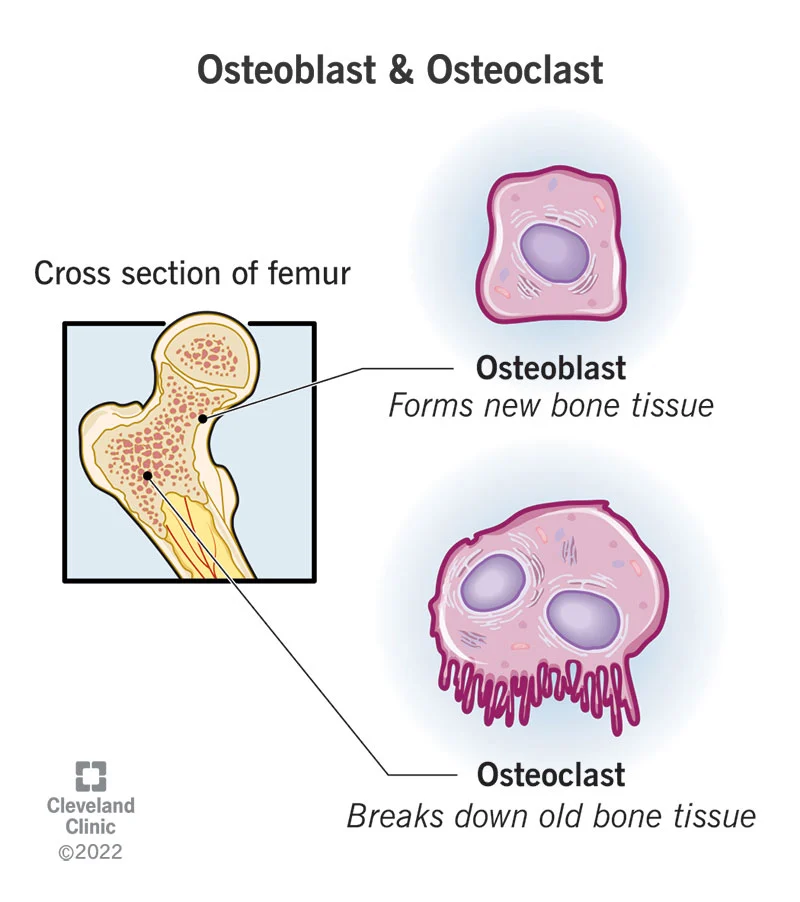November 15, 2023 by Fuel & Fortify
Osteocalcin: Why This Hormone Matters

During our athletic endeavors—–be it marathons, cycling races, or open water swims—–we often don’t think twice about the health of our bones.
Prominent voices out there in the endurance community like Peter Attia MD, stress the importance of getting an annual DEXA (dual x-ray absorptiometry) scan, which measures bone mineral density to diagnose the onset of bone diseases such as osteopenia and osteoporosis.
Yet, if you’re under 50—often the urgency just isn’t there. What’s worth taking note of however, is that the critical growth phase for building bone density extends up to age 26 for men and 22 for women.

Source: LifeHub
If you allow us to get even more dramatic for a second—if you 65 or over and fall and break your hip, there’s a 30 to 40% chance that you’ll be dead in a year. Yes, bones matter.
Osteocalcin is a protein hormone produced by bones, involved in bone formation and regulating metabolism. Osteocalcin is secreted from bone during exercise so that adaptations from that workout can take place. Bone remodeling is the morphological basis of bone turnover and includes two components: bone resorption and formation—and this is significant through all phases of life. The bad news—levels of it in the blood decline steeply as we age.
In fact, there is a U-shape association between baseline osteocalcin and all-cause mortality. Which means that there is a sweet spot. As we said earlier, too little of it infers low bone density and an increased risk of osteoporotic fractures. Yet, elevated osteocalcin levels are also not a good thing—the reason as to why we may see higher levels, we’ll dig into a bit later.

Source: Shen et al.
Understanding Osteocalcin: More Than Just a Bone Health Marker
Bones contains cells called osteoclasts that break down bone tissues, other cells called osteoblasts make new bone tissue using minerals such as calcium and phosphate from blood.
Osteoclasts work alongside osteoblasts, which are responsible for bone formation. Together, they maintain a delicate balance between bone resorption and formation, a process known as bone remodeling.

Source: Cleveland Clinic
Osteocalcin, historically linked to bone metabolism, is now understood to impact broader physiological functions, including energy metabolism and muscle function. A study discovered that osteocalcin signaling in myofibers (the individual muscle cells) is vital for preserving muscle mass in aging mice, promoting protein synthesis. Incredibly, introducing exogenous osteocalcin increased muscle mass in 10-month-old mice.
Boosting Osteocalcin
This study assessed the impact of long-distance running, examining marathoners who maintained a weekly run of about 50 kilometers for two years. Significant differences in blood osteocalcin levels were observed in the marathon group compared to the control. Specifically, within the 30-39 age group, there was an 60% increase in males and a 132% increase in females. Astonishing.
And what’s more, the weight-bearing aspect of exercise plays a significant role. As shown in this research, runners exhibited higher leg bone mineral density compared to cyclists.
Higher Osteocalcin in Osteopenia & Osteoporosis Patients
While we’ve explored why elevated osteocalcin levels might indicate an issue, it’s often other diseases or hormonal imbalances that drive increased bone turnover or abnormal bone formation—and that’s why context is key here.
Why we might see high levels of osteocalcin in individuals with osteopenia or osteoporosis could be a response to bone loss rather than the cause. Here are some examples of instances where that might be the case.
-
Hyperparathyroidism: Excessive secretion of parathyroid hormone (PTH) can lead to increased bone turnover, raising osteocalcin levels.
-
Acromegaly: A hormonal disorder where there’s an excess of growth hormone, leading to abnormal bone growth and increased osteocalcin levels.
-
Bone Metastasis: Certain cancers that spread to the bones can increase bone turnover, causing elevated osteocalcin levels.
Summary
Exercise-induced osteocalcin release is generally beneficial for bone health. It contributes to bone formation and remodeling, which is essential for maintaining bone strength and density. However, in certain conditions like osteoporosis where the balance between bone formation and resorption is disrupted, leading to weaker bones, the presence of higher osteocalcin levels requires considering various factors beyond just osteocalcin levels, such as the overall bone health status and several other biomarkers.